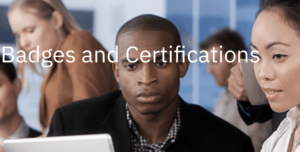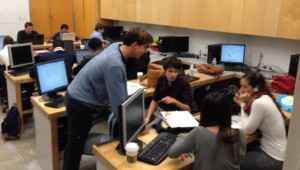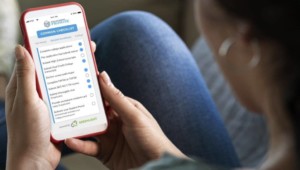GreenLight Means Go: Where Learner and Employment Records Are Headed
Key Points
-
The vast majority of students who graduate from high school in the United States typically have their learning diluted to a single one-page transcript that lists courses and grades – and often a GPA.
-
This format has withstood the test of time, yet conveys very little about the competency and skills the student has gained through the degree.

Over the last year, bots have posed as students and fraudulently secured financial aid, millions of dollars have been spent by students and adults sharing academic credentials (via organizations such as National Student Clearinghouse or Parchment), scholarships have gone unawarded, and post-secondary institutions and employers have spent significant dollars to recruit students and employees.
Simultaneously, the focus on credentialing and documenting student learning has increased as secondary schools and post-secondary institutions attempt to better describe student knowledge, skills and dispositions. This matters in the outbound direction where students are seeking to find the best and financially prudent post-secondary options whether employment or college. Conversely, employers, colleges, universities and scholarship organizations look to improve their inbound matchmaking to connect with the highest quality students that match their needs. By matching demonstrated skills and dispositions with needed skills and dispositions and financial resources, learners experience far less friction and far more control in their journey to gainful employment.
Many schools and states are building Portraits of Graduates to better define the skills expected of their students. Significant investments in workplace recruiting are improving systems to better identify the right prospective employee to match the position opening.
Yet, despite this, the vast majority of students who graduate from high school in the United States typically have their learning diluted to a single one-page transcript that lists courses and grades – and often a GPA. This format has withstood the test of time, yet conveys very little about the competency and skills the student has gained through the degree. Nor does it share the more comprehensive picture of a student learning outside of courses. A forced assumption is made by the university around the validity of the high school degree and the information that it conveys.
And, employers and universities continue to rely on outdated systems to find students and employees. Job marketplaces, blanket applications, expensive marketing campaigns all equal wasted time and resources for those looking to find the best skill-match individuals.
New Solutions
New solutions present a unique solution to these challenges by providing a user-controlled technology to store, share, search, and match acquired competency with opportunity. One of the key players in this space is GreenLight Credentials, a frictionless, user-controlled talent search and credential-communicator that addresses these issues. On the outbound side, institutions and their learners can store any type of verified record including transcripts, credentials, badges, or other documentation of learning. These learning experiences are then translated into data – competencies, skills, interests, and accomplishments that are then matched with scholarship, university and employment opportunities. Universities and employers can join the network to discover and connect with prospective students or employees.
The vast majority of students who graduate from high school in the United States typically have their learning diluted to a single one-page transcript that lists courses and grades – and often a GPA.
Getting Smart Staff
Challenges exist around security and ownership. Manoj Kutty, CEO of GreenLight, solves this by building on the blockchain, and maintaining uniquely verifiable identities and connected credentials for every user. Additionally, permanent records have drawbacks, in that, well, they are permanent. One way to address this concern is to ensure that the owner of the record controls the visibility of all artifacts on the record.
GreenLight is one of a handful in the larger Learner and Employment Record ecosystem solving for frictionless systems to store and share learning. Design features such as interoperability (plays nice with others), verifiable (every artifact can be supported by a verifier), and portable (transferable across multiple sectors and visibility controlled by owner) are essential in this work. Most importantly, the ecosystem is paying attention to equity, with Digital Promise leading the way in producing resources, badges and learning opportunities for designers to build with equity at the front.
Returning to the current challenges, Learner and Employment Record platforms create secure student identification (eliminating bot invasion), build affordable ways to share documentation of learning (reducing the repeated $5-$20 per transcript send fees along with delays in procuring these records), connect students to scholarship opportunities to reduce student debt, and focus college and employment recruiting efforts to reduce enrollment marketing and hiring costs.
An Expanded Platform
Academic credentialing is only a piece of the puzzle. GreenLight has also created platform additions such as GreenLight Balance to evaluate and support those struggling with mental health and GreenLight Fitness, modernizing individual physical health and wellness through personalized growth metrics. In combination with financial support (scholarship matching, job placement) and academic clarity (learner records), each user can experience a seamless secondary to career pathway that is controllable and affordable. Research has shown that taking care of mental health and physical fitness has a positive correlation on academic outcomes.
Get Started
Getting started in a new technology space can be challenging, so consider a few questions as you launch your effort.
- High schools: Are your students getting the best customized support they can get for college and career placement?
- Employers: Review your recruitment platforms. How effective are you at recruiting new employees and how expensive is this process? How sure are you on their verified credentials and skills?
- Colleges and Universities: Are your recruiting efforts connecting you directly with the students who would be the best fit for your school?
- Students: Does the college search seem daunting even with support from your school? Do you want to avoid repeated and painful documentation requests for the learning that you have accomplished (but is held by another organization)
- Where to start: Contact GreenLight Credentials. They would be happy to offer advice and feedback.
The New Pathways (#NewPathways) campaign will serve as a road map to the new architecture for American schools, where every learner, regardless of zip code, is on a pathway to productive and sustainable citizenship, high wage employment, economic mobility, and a purpose-driven life. It will also explore and guide leaders on the big education advances of this decade–how access is expanded and personalized, and how new capabilities are captured and communicated. When well implemented, these advances will unlock opportunities for all and narrow the equity gap. You can engage with this ongoing campaign using #NewPathways or submit an idea to Editor using the writing submission form.







0 Comments
Leave a Comment
Your email address will not be published. All fields are required.